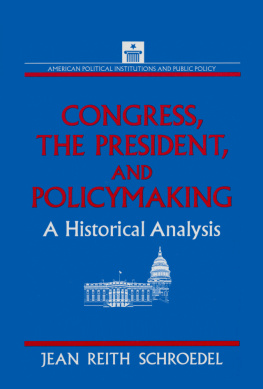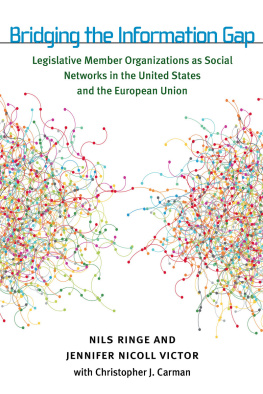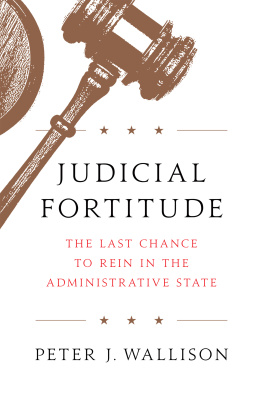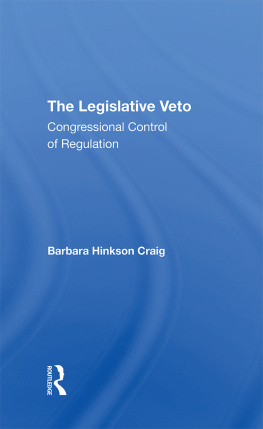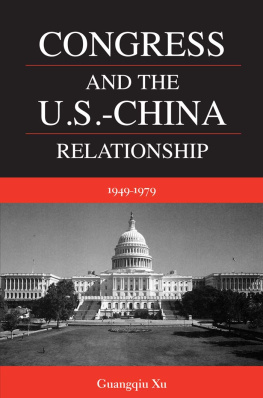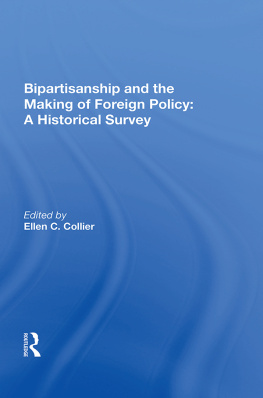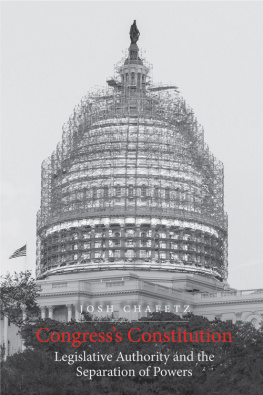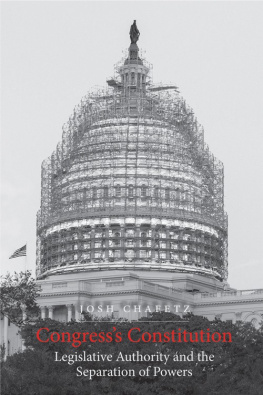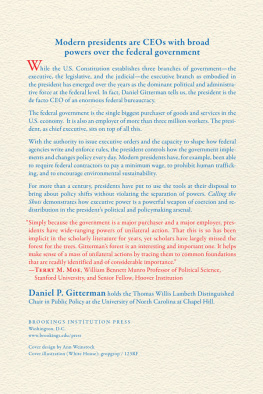CONGRESS, THE PRESIDENT, AND POLICYMAKING
American Political Institutions and Public Policy
Stephen J. Wayne
Series Editor
VICTORY
How a Progressive Democratic Party Can Win and Govern
Arthur Sanders
THE POLITICS OF JUSTICE
The Attorney General and the Making of Legal Policy
Cornell W. Clayton
A KINDER, GENTLER RACISM?
The Reagan-Bush Civil Rights Legacy
Steven A. Shull
CONGRESS, THE PRESIDENT, AND POLICYMAKING
A Historical Analysis
Jean Reith Schroedel
RISKY BUSINESS
PAC Decisionmaking and Strategy
Robert Biersack, Paul S. Herrnson, and Clyde Wilcox, Editors
PUBLIC ATTITUDES TOWARD CHURCH-STATE RELATIONS
Clyde Wilcox and Ted G. Jelen
AMERICAN POLITICAL INSTITUTIONS AND PUBLIC POLICY
Congress, the President, and Policymaking
A Historical Analysis
Jean Reith Schroedel
First published 1994 by M.E. Sharpe
Published 2015 by Routledge
2 Park Square, Milton Park, Abingdon, Oxon OX14 4RN
711 Third Avenue, New York, NY 10017, USA
Routledge is an imprint of the Taylor & Francis Group, an informa business
Copyright 1994 Taylor & Francis. All rights reserved.
No part of this book may be reprinted or reproduced or utilised in any form or by any electronic, mechanical, or other means, now known or hereafter invented, including photocopying and recording, or in any information storage or retrieval system, without permission in writing from the publishers.
Notices
No responsibility is assumed by the publisher for any injury and/or damage to persons or property as a matter of products liability, negligence or otherwise, or from any use of operation of any methods, products, instructions or ideas contained in the material herein.
Practitioners and researchers must always rely on their own experience and knowledge in evaluating and using any information, methods, compounds, or experiments described herein. In using such information or methods they should be mindful of their own safety and the safety of others, including parties for whom they have a professional responsibility.
Product or corporate names may be trademarks or registered trademarks, and are used only for identification and explanation without intent to infringe.
Library of Congress Cataloging-in-Publication Data
Schroedel, Jean Reith.
Congress, the President, and policymaking:
a historical analysis
/Jean Reith Schroedel.
p. cm. (American political institutions and
public policy)
ISBN 1-56324-176-5 (H)ISBN 1-56324-177-3 (P)
1. Separation of powersUnited StatesHistory.
2. LegislationUnited StatesHistory.
3. United StatesConstitutional history.
I. Title.
II. Title: Congress, the President, and policymaking.
III. Series.
JK305.S45 1994
320.4'04'0973dc20 93-28578
CIP
ISBN 13: 9781563241772 (pbk)
ISBN 13: 9781563241765 (hbk)
For my not entirely unpleasant partner, Paul
| Tables |
Impact of Congress and President in Getting Bills
Reported Out of Committee |
The Impact of Different Support Patterns on Bills
Being Reported Out of Committee |
Reasons Why Banking Bills Are Reported Out of
Committee (Model 1) |
Reasons Why Banking Bills Are Reported Out of
Committee (Model 2) |
Reasons Why Banking Bills Are Reported Out of
Committee (Model 3) |
Reasons Why Banking Bills Are Reported Out of
Committee (Model 4) |
Reasons Why Routine Banking Bills Are Passed
(Model 7) |
Reasons Why Important Banking Bills Are Passed
(Model 8) |
Presidential Effectiveness in the Nineteenth and
Twentieth Centuries |
Congressional Effectiveness in the Nineteenth and
Twentieth Centuries |
| Figures |
Support for Banking Bills: Congressional
Sponsors and Presidential Position |
Banking Bills Reported Out: Differences Between
House and Senate |
Banking Bills Reported Out: Success of Presidents
and Chairs |
The allegations have been frequent and continuous. Something is wrong with the policymaking process. During the second term of the Reagan administration the concern was spiraling deficits. Presidential budgets were ritually pronounced "dead on arrival" while appropriations bills were amalgamated into huge, veto-proof, continuing resolutions. During the Bush administration, the charge was "gridlock" and "stalemate" as Congress and the president seemed at loggerheads, unable to agree on legislative policy solutions to the nation's economic and social problems.
The Clinton administration broke the gridlock during its first year but at a cost to the president's reputation and the Congress's integrity. Concerns were voiced that the president had given away too much to build a winning coalition, that members of Congress had "rolled" him for the benefit of their constituencies and ultimately, their own reelection. The criticism was that those in Congress were still preoccupied with short-term, parochial interests rather than longer-term, national concerns; that PAC money continued to flood congressional coffers and affected legislative decisionmaking; and that structural reform that undercut the power of committee and subcommittee chairs remained on the back burner.
All of these factorsgridlock, dealmaking, and pernicious, self-interested pressurehave contributed to low public esteem for the country's political institutions and leaders even when agreement has been reached on major public policy issues. Over the last two decades there has been a steady decline in the confidence people have in their governing institutions. National surveys conducted by the National Opinion Research Center reveal such an erosion of the public's trust in Congress and the executive branch:
What is wrong? Are public perceptions out of whack or are Congress and the presidency not functioning effectively? Professor Jean Reith Schroedel's study, Congress, the President, and Policymaking: A Historical Analysis, provides a much needed longitudinal perspective for answering these questions.
Schroedel begins on the assumption that the prevailing literature on congressional-presidential relationships presents an either/or perspective that overemphasizes institutional conflict, presidential initiatives, and executive dominance or impotence. What is needed, she argues, is a theory that examines the evolution of this relationship within the constitutional framework in which it was set and still functions. She calls this theory "dynamic constitutionalism" and applies it to the evolution of presidential-congressional relationships. Her application reveals a rather different pattern of interaction from what much of the literature would suggest.
Not only does Schroedel provide a new perspective, but she also provides a historical application of it. Her work spans a large part of the entire period of congressional-presidential interaction. This enables readers to discern patterns of institutional relationships as well as see how the development of the modern activist state, the administrative structure of the executive branch, and the internal organizational and operational changes of Congress have affected this relationship over time.

